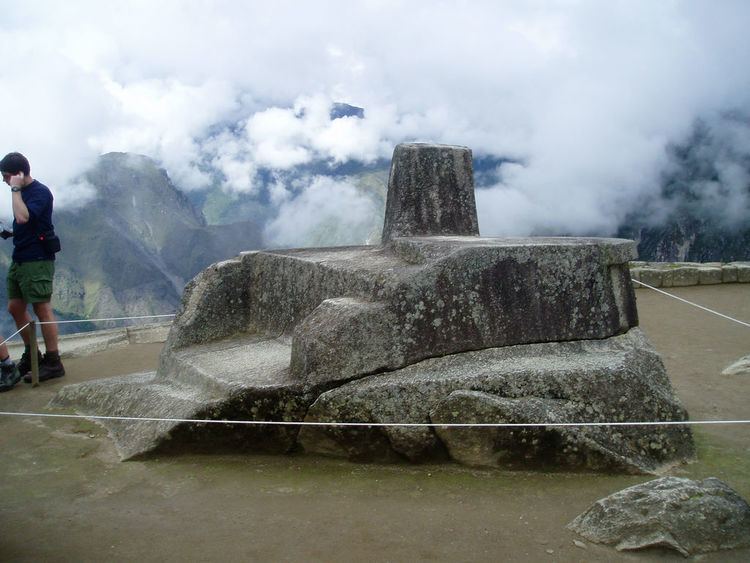Location Peru Region Urubamba Province | Address Acceso a Tipon, Peru | |
 | ||
Similar Puka Pukara, Coricancha, Q'inqu, Inti Punku, Huayna Picchu | ||
Inti Watana or Intiwatana (Quechua) at the archaeological site of Machu Picchu (Machu Pikchu) is a notable ritual stone associated with the astronomic clock or calendar of the Inca in South America. Machu Picchu was built c. 1450 by the Sapa Inca Pachacuti as a country estate. In the late 16th century, the Viceroy Francisco de Toledo and the clergy destroyed those inti watana which they could find. They did so as they believed that the Incas' religion was a blasphemy and the religious significance of the inti watana could be a political liability. The inti watana of Machu Picchu was found intact by Bingham in 1911, indicating that the Spanish conquerors had not found it.
Contents
Design
The inti watana of Machu Picchu was carved at the top of a natural pyramid's summit. It is characterized by odd shapes which defy interpretation, and incomplete descriptions of its purpose in Inca chronicles. Featuring a slightly inclined plane at its top, an upright stone column tilts 13 degrees northward. Other features include a granite block resembling a carved shelf, bench, or altar, and a rectangular base.
Function
Possibly used as a sundial, it was aligned with the sun's position during the winter solstice. The Inca believed the stone held the sun in its place along its annual path in the sky. At midday on November 11 and January 30 the sun stands almost above the pillar, casting no shadow at all. On June 21, the stone is casting the longest shadow on its southern side and on December 21, a much shorter one on its northern side. The base is said to be "in the shape of a map of the Inca Empire" but most archaeologists disagree, observing that the base is squat and stubby whereas the Tawantinsuyu is long and thin. Pedro Sueldo Nava describes the landmark as "perhaps one of the most beautiful and enigmatic places to be found in Machu Picchu."
